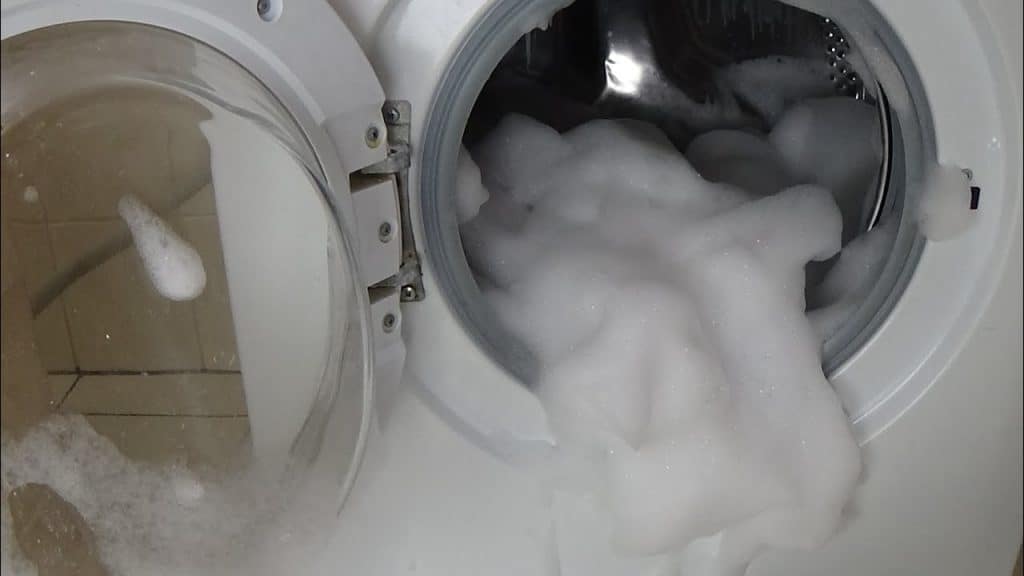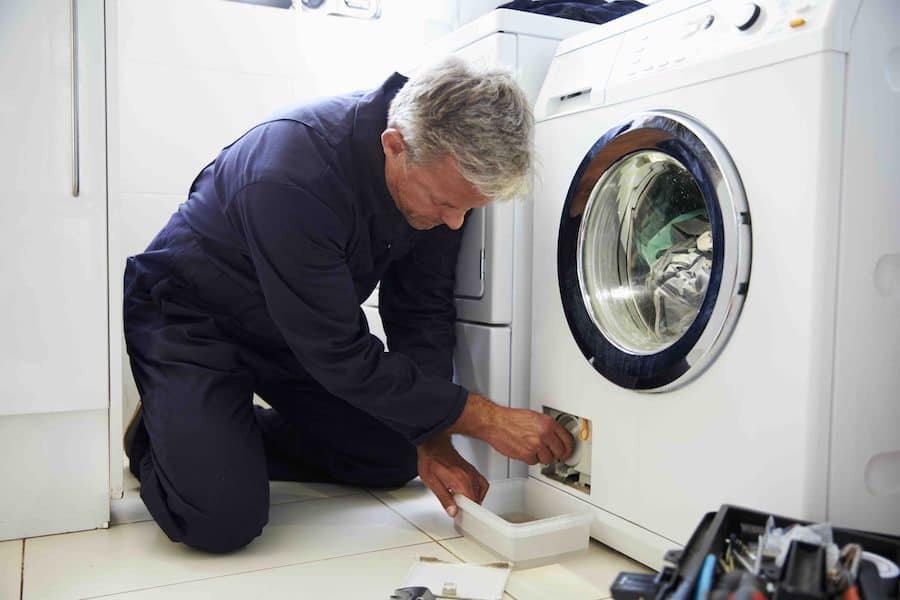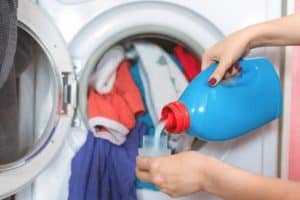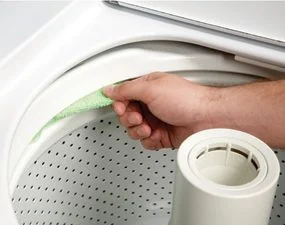Washing machines are commonly used by individuals to clean their clothes and beddings instead of using hands. Most washing machines can be affected by problems such as foam coming out of the washing machine while the device is draining, the washing machine won’t turn off, bubbles coming out of the machine while washing, among others.
If foam starts coming out of your washing machine drain, consider fixing the problem immediately to avoid further damages. You can try fixing the problem or consulting licensed personnel to help you fix the problem if you cannot solve the issue. Also, ensure you follow the manufacturer’s instructions when troubleshooting foam coming out of the washing machine drain issue.
Table of Contents
Possible causes of foam coming out of the washing machine drain.

Foam coming out of the washing machine drain is a sign that your washing machine has a severe issue that requires instant troubleshooting. Several reasons can result in such kind of problem, and they include;
- Use of too much laundry detergent.
Sometimes, using too much laundry detergent that required amount can affect your washing machine resulting in the machine continuously producing foam. Therefore, it is advisable to use recommended laundry detergent when doing your laundry.
- Using different laundry detergents.
Apart from overusing laundry detergent, sometimes an incorrect laundry detergent is used, such as using Ariel and non-HE laundry detergents for wrong clothes. Ariel detergent contains many chemicals that increase the level of foam produced when the washing machine is still running.
- Washing machine drums small.
Sometimes, excessive foam product results from a small washing machine drum which restricts water flow when washing.
- Placing many clothes in the washing machine.
If you place many clothes in the washing machine, the flow of water in and out of the device is restricted, resulting in foam production while the washing machine drains.

8 Steps on how to troubleshoot foam coming out of the washing machine drain
If you experience such a problem, the information below will guide you on how to troubleshoot the issue without involving specialized personnel or an experienced person.
The following steps provide the necessary information to fix the issue concerning form production in the washing machine.
Step 1: Inspect the washing machine.
Once you experience an issue concerning inappropriate functioning of your washing machine, first, inspect the whole machine and identify any errors. If there are any issues, try fixing them by following the recommended procedures.
Sometimes, the issue of foam coming out may be as a result of a wholly damaged washing machine. In this case, consider replacing the whole device or consult a professional to help you troubleshoot the problem. Finally, consider performing frequent checkups on your washing machine.
Step 2: Use recommended laundry detergent during laundry.

Before using laundry detergent, refer to the instructions concerning the amount of detergent recommended for laundry. For instance, it is advisable to use two or three tablespoons of detergent while depending on the amount of detergent stated.
Moreover, if you use different laundry detergents such as HE detergent, consider using low or recommended amounts for your laundry since they are highly soluble in water.
Step 3: Clogging of hose or draining pipes.
Clogging the drain hose and the drain pipe restricts water from flowing smoothly in and out of the washing machine. Once the flow of water is limited, foam is produced continuously.
First, to troubleshoot such a problem, inspect all the washing machine pipes and identify any issue such as a blockage. You can locate the clogging by using a flashlight whereby you disconnect the washing machine drain pipe and then place an on the flashlight.
If you can see the flashlight or light, your washing machine is not blocked, but if you cannot see any light or some light, that is a sign that your drain hose is clogged. Bring any tool and try removing the clogged material in the drain hose.
Further, running hot water at times down the blocked drain hose may unclog it. Other times it can be difficult to remove whatever that is stuck in your drain hose. In such circumstances, consult a specialized plumber to help you unblock the drain hose.
Step 4: Lack of washing machine drain adapter.
Often, foam formation in the washing machine drain may result from the inexistence of the drain adapter in the washing machine. For instance, some washing machines do not have any drainpipe adapter installed.
Lack of drainpipe adapter results in continuous foam production and other problems such as bubble production while the washing machine drains. First, buy a recommended drainpipe adapter that fits your washing machine perfectly and disconnect the components of the washing machine.
Install the drainpipe adapter correctly and replace all washing machine components to their position. Test the washing machine and see if it is working perfectly. If the problem persists, check the drainpipe adapter reinstallation condition and try repeating the process above. Moreover, you can consider calling a licensed plumber to help to install the drainpipe adapter.
Step 5: Washing machine drum and drain intel too small.
Small washing machine drum and drain intel results in water overflow or too much foam production since water is limited from flowing out of the washing machine. Ensure your machine drum and drain intel are of the desired size and length and are perfectly connected. For instance, the length of the drain intel should be approximately 19 to 30 inches.
Step 6: Broken washing machine belts.

First, scrutinize your washing machine and see if the machine belts are in good condition. Use a screwdriver and disconnect the main strap from the pump belt by removing all the screws holding them in position.
Examine all the belts and try fixing any problem identified. If the primary and pump belts are damaged beyond any fixation, consider replacing the belts with new ones. Ensure you buy belts that suit your washing machine effectively. Moreover, ensure you follow the manufacturer’s instructions by making manual book reference or contacting the manufacturer.
Step 7: Laundry detergent formation.
Unwanted foam is also created from laundry detergent that has accumulated on the machine standpipes. While the machine is operating, foam is pushed out of the device instead of downwards the draining pipe. To troubleshoot such issues, you can use a mixture of water and fabric conditioner every time you use the machine or wash.
Step 8: Washing machine vent.
The washing machine vent enables water to flow properly without any limitation. Instead of a washing machine vent, you can also use drain tubes. Moreover, the vent and the drain tubes must be of recommended size and shape to fit your washing machine and function accurately.
Here’s our another fix about Electric Oven Broiler Works Bake Does Not – What To Do? You may check that out!
Frequently asked questions
How often can I inspect my washing machine?
Inspect your washing machine frequently and try performing maintenance workload such as sanitizing the machine using a mixture of vinegar and hot water more often. Run the mix down the device to prevent it from blocking.
Conclusion
Issues concerning foam coming out of the washing machine drain can be difficult and require both labor and time to fix. Luckily, the information above will help you fix the problem as long as you follow each step.
Moreover, the information shown above will help you understand the possible cause of foam coming out of the drain and identifying the causes. For instance, the reasons are identified through examining the whole washing machine. Finally, try fixing the problem on your own before contacting a licensed plumber.
